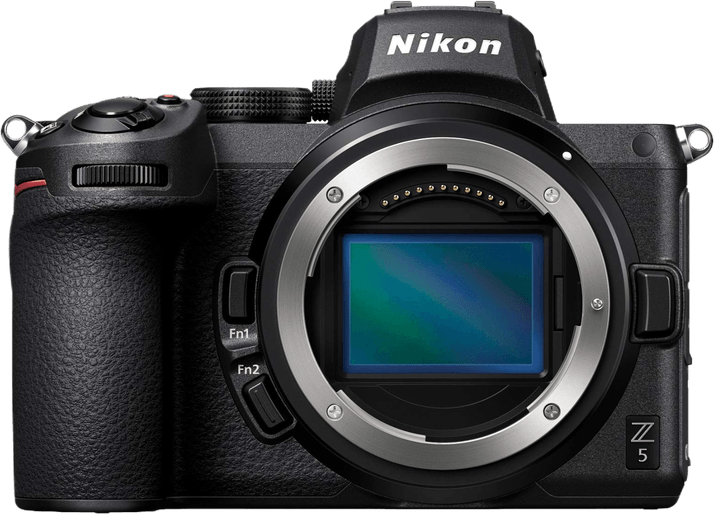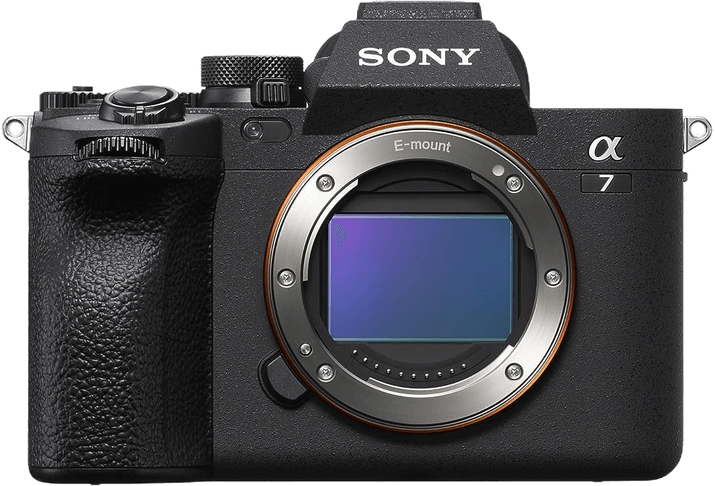Nikon Z5 vs Sony a7 IV Comparison
Nikon Z5

Sony a7 IV

The Sony a7 IV outperforms the Nikon Z5 with a score of 84/100 compared to 78/100. Both mirrorless cameras share similarities such as their release years, 2020 for the Nikon Z5 and 2021 for the Sony a7 IV. The cameras have similar sizes, with the Nikon Z5 measuring 134 x 100.5 x 69.5mm and the Sony a7 IV at 131 x 96 x 80mm. The weight difference is minimal, with the Nikon Z5 weighing 675g and the Sony a7 IV at 659g.
The Sony a7 IV has a higher score because it is a better camera overall. However, the Nikon Z5 has an advantage in terms of its launch price, which is $1400 compared to the Sony a7 IV’s $2499. Despite the price difference, the Sony a7 IV’s superior performance justifies its higher cost. In the end, the decision comes down to individual preferences and budget constraints, but the Sony a7 IV ultimately stands out as the better option.
Nikon Z5 vs Sony a7 IV Overview and Optics
The Sony a7 IV outperforms the Nikon Z5 in optics with a score of 85/100 compared to the Nikon Z5’s 81/100. Both cameras share some common specifications, such as the CMOS sensor type, full-frame sensor size, and image stabilization. Additionally, they both have a DXOMARK score of 97 for their sensors.
The Sony a7 IV surpasses the Nikon Z5 in several aspects. Firstly, it has a higher megapixel count of 33 compared to the Nikon Z5’s 24, providing greater detail and resolution in images. Secondly, the Sony a7 IV boasts a faster shooting speed of 10 frames per second, double the Nikon Z5’s 4.5, allowing for better capture of fast-moving subjects. Furthermore, the Sony a7 IV utilizes the advanced Bionz XR processor, contributing to its overall better performance in optics.
Despite its lower score, the Nikon Z5 has some merits. It features the Nikon Z lens mount, which is compatible with a range of high-quality lenses. However, the Sony a7 IV also offers a versatile lens mount with the Sony FE mount. Thus, both cameras provide flexibility in lens choices.
When comparing the optics of these two cameras, the Sony a7 IV emerges as the superior choice due to its higher megapixel count and faster shooting speed. While the Nikon Z5 holds its own with a respectable score and the Nikon Z lens mount, the Sony a7 IV’s advantages make it a more compelling option for those seeking better optical performance.
Nikon Z5 vs Sony a7 IV Video Performance
The Sony a7 IV outperforms the Nikon Z5 in video capabilities, scoring 91/100 compared to the Nikon Z5’s 83/100. Both cameras share some common video specifications, including a maximum video resolution of 4K and dimensions of 3840 x 2160. Additionally, both cameras have built-in time-lapse functionality.
The Sony a7 IV surpasses the Nikon Z5 in terms of maximum video frame rate, offering 120fps compared to the Z5’s 60fps. This higher frame rate allows for smoother and more detailed slow-motion footage, providing an advantage to filmmakers and videographers who require this feature. The higher score of the Sony a7 IV reflects its superior video performance in this aspect.
While the Nikon Z5 has a lower score and frame rate, it still provides quality video performance and may be suitable for users who do not require the additional frame rate capabilities of the Sony a7 IV. Its 60fps maximum frame rate is sufficient for most casual video creators and enthusiasts, ensuring smooth and visually appealing footage.
Comparing the video capabilities of these two cameras, the Sony a7 IV is the clear winner for those seeking the best performance and the highest frame rate. However, the Nikon Z5 remains a competent choice for users with less demanding video requirements. Both cameras offer 4K resolution and time-lapse features, making them well-suited for a wide range of video applications. Ultimately, the choice between these two cameras will depend on the individual user’s needs and priorities.
Nikon Z5 vs Sony a7 IV Features and Benefits
The Sony a7 IV emerges as the winner with a feature score of 83/100, while the Nikon Z5 scores 72/100. Both cameras share similarities in specifications, such as screen resolution, touchscreen capabilities, flip screen, GPS, WIFI, and Bluetooth. However, there are differences that set them apart and contribute to the Sony a7 IV’s higher score.
The Sony a7 IV outperforms the Nikon Z5 in certain aspects. Although both cameras have a 3-inch screen size, the a7 IV offers a higher resolution of 1,040,000 dots, providing clearer and sharper image previews. Additionally, the Sony a7 IV has a more advanced autofocus system, which contributes to its superior performance in capturing fast-moving subjects and low light situations.
On the other hand, the Nikon Z5 has a larger screen size of 3.2 inches, which may be preferred by some users who value a larger display for composing and reviewing images. However, this advantage does not significantly affect the overall performance of the camera compared to the Sony a7 IV.
In terms of features, the Sony a7 IV is the better camera, boasting a higher feature score and more advanced specifications. The Nikon Z5, while having a larger screen size, does not offer any other significant advantages over the Sony a7 IV. Therefore, users seeking a camera with superior features and performance should opt for the Sony a7 IV.
Nikon Z5 vs Sony a7 IV Storage and Battery
The Sony a7 IV wins the storage and battery comparison with a score of 76/100, while the Nikon Z5 scores 73/100. Both cameras have two memory card slots, with the Nikon Z5 accepting SD/SDHC/SDXC (UHS-II compatible) cards and the Sony a7 IV accepting CFexpress Type A and SD (UHS-II compatible) cards.
The Sony a7 IV is superior in battery life, offering 580 shots compared to the Nikon Z5’s 470 shots. Both cameras use different battery types: the Sony a7 IV uses the NP-FZ100, while the Nikon Z5 uses the EN-EL15c. Additionally, both cameras have USB charging capabilities.
The Nikon Z5, though having a lower score, offers compatibility with more common memory cards, which may be an advantage for users who already possess SD/SDHC/SDXC cards.
Given the results, the Sony a7 IV is the better choice for users who prioritize longer battery life and faster memory card compatibility. However, the Nikon Z5 remains a viable option for those who prefer using more readily available memory cards.
Nikon Z5 vs Sony a7 IV – Our Verdict
Are you still undecided about which camera is right for you? Have a look at these popular comparisons that feature the Nikon Z5 or the Sony a7 IV:
